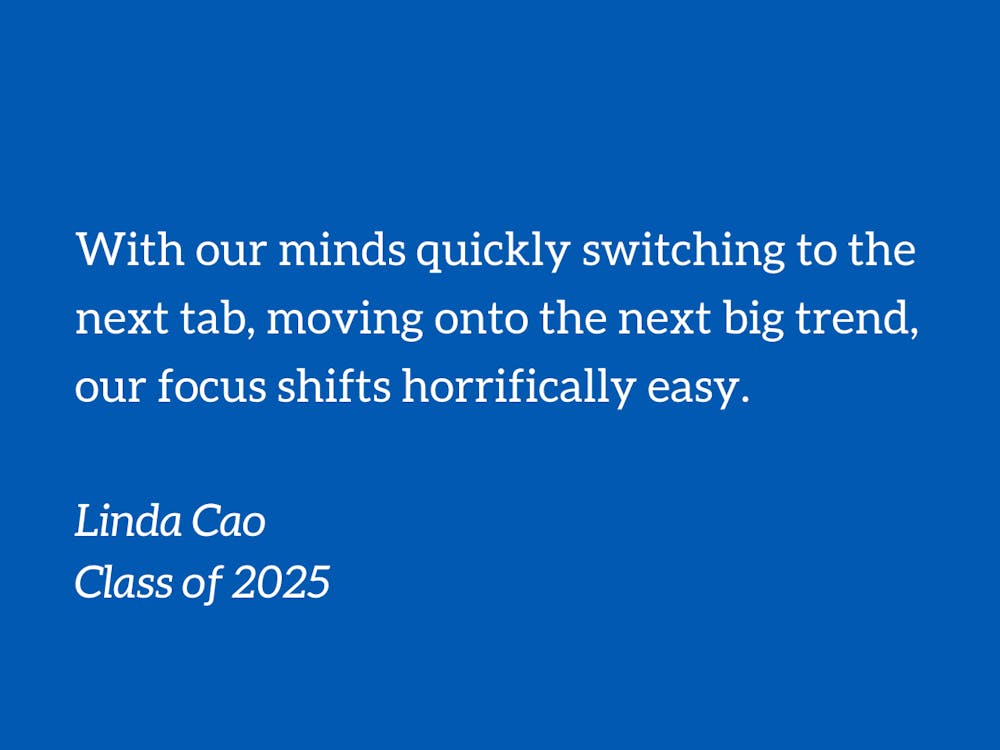If you’ve ever mindlessly scrolled through Instagram or Tiktok, maybe munching on the free popcorn from Craven Quad last Friday, then you’ve probably seen the new trend with combining clips of Subway Surfers to content clips to hold the audience’s attention.

These clips would have only focused on the main clip of the content, but to keep their audience’s attention, people have started to include snippets of the game Subway Surfers because its fast-paced, jumping, dashing, and dodging actions are stimulating to the viewers, encouraging their engagement.
If you’re skeptical if this tactic works, then I can, sadly, assure you that it certainly does. Samson is a video effects editor for Valkyrae, one of the most popular video game streamers in the industry. In a recent release, Samson reveals that he observed audience’s retention at the 10-minute mark reached nearly 70%, compared to other videos where viewers barely stay for the first two minutes.

Evidently, these results may not be generalizable to other content creators and their audience. Nevertheless, with our attention spans decreasing, we risk the quality of our performance, academic and non-academic, and the constant need for stimulation is slippery slope towards unhealthy behaviors that can interfere with your daily life.
According to William James, proclaimed the Father of psychology, attention is “taking possessions by the mind in clear and vivid form of one out of what seems several simultaneously possible objects or trains of thought.” To understand our decreasing attention span, I am interested in two main subtypes of attention: focused and rote activity. Focused attention is utilized when people are engaged and challenged by the task at hand. Rote activity attention is observed when people are engaged but not challenged, which is commonly used for watching TikToks or Insta reels.
The decrease with our attention spans is strictly connected with rote activity, where we’ve developed the inadvertent need to be entertained 24/7. The Technical University of Denmark proposes that the global attention span is decreasing because of the overwhelming amount of information available to the public. Likewise, Nature Communications echoes this sentiment with their results claiming that because people have more things to focus on, they often focus on things for a shorter period of time. In 2012, the average adult attention span was 75 seconds. By 2018, it has decreased to 47 seconds. Now, we can only assume that it’s shorter.
As our attention spans decrease, our ability to focus and dedication to tasks are dulled. A few years ago, I could read through dozens of pages of assigned reading without feeling the urge to refresh my Twitter feed immediately. But now, I would be lucky if I could get through half a page before searching up if Taylor Swift and Joe Alwyn confirmed their breakup. Although people say that you will pay attention if it really matters, such as cramming for a final an hour before the exam begins, but do we really want to perform optimally only when there’s a demanding deadline hanging over our heads?
Therefore, although you may ultimately ace your final, you may struggle with studying daily. Unfortunately, achievements in the real world are established with constant effort in a resilient manner, as if we’re running a marathon, and not a quick sprint of energy to the finish line. Also known as “grit,” our perseverance and commitment to tasks, especially in the face of obstacles, may dwindle because our desire for stimulation may lure us towards other dopamine-activating activities, such as gambling. To clarify, just because you watch Subway surfer Tiktoks doesn’t mean that you’ll definitely be addicted to gambling in the near future, but I would simply like to emphasize the dangers of our ever decreasing attention span and the possible side effects of our addiction.
Along with this trend comes the new trend where we care about more things, but we spend less time caring about them separately. In 2013, Twitter’s global trends would trend for 17.5 hours on average. In 2016, these trends would only last for 11.9 hours at most. With a saturated market of entertainment, from Minecraft speedruns to cotton-candy slime tutorials, our minds can be constantly stimulated with a diverse selection of content. If you’re bored of binge watching ramen mukbangs, then you can watch GRWMs and cringe when the creator cuts up a vintage dress into a crop top.
Essentially, as our attention spans decrease, we begin to focus on quantity over quality. A short attention span doesn’t simply affect our own performance, but also influences the behaviors of others. With our minds quickly switching to the next tab, moving onto the next big trend, our focus shifts horrifically easy. How will we react during important events? National emergencies? Global emergencies? With our 2024 presidential elections coming up, I can honestly imagine presidential campaigns and advertisements with clips of Subway Surfers in the corners, keeping their viewers engaged. But, and I must ask, when does being engaged become being distracted?
Our attention is a precious resource, and with the dwindling supply of it, I believe it is essential to wholeheartedly preserve it, even if it’s for 47 seconds.
Linda Cao is a Trinity junior. Her column typically runs on alternate Wednesdays.
Get The Chronicle straight to your inbox
Sign up for our weekly newsletter. Cancel at any time.
Linda Cao is a Trinity senior and an opinion managing editor of The Chronicle's 119th volume.

